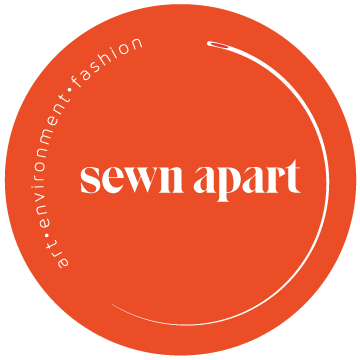The Co-Existence of Fashion and Sustainability
By Kelsey Davis of The Lux Authority
Perhaps you are a consumer, like many others worldwide, who is becoming more health, social, and environmentally conscious. Careful observation to these issues is crossing over into the fashion industry. You are aware of the waste in the landfills, pollutions in the air, animal cruelty, toxins and inhumane manufacturing. What exactly does this mean for fashion and does it matter?
When buying fashion items, your money also supports the brand company behind the fashion. This includes how the product is made and with what materials. Fashion is a style, a certain look. Fashion is seen everywhere, like schools, malls, in movies, on faces, and in magazines. It includes clothing, furniture, accessories and textiles. How does fashion and sustainability co-exist?
Sustainabilityis when resources are maintained at a certain level or rate. This can be environmental, social, or economical. The environmental sustainability is when the resources can be harvested at a certain level allowing continuous depletion without a negative cost to the environment. Environmental costs must consider harmful elements, such as the pesticides used in cotton fields. When cotton crops are sprayed, it contaminates the water system and kills bees. Socially, the company should consider the social well being of the country of product manufacture. Economic sustainability maintains a certain level of production at a decent cost, yielding a minimum of 2% growth each year.
Fashion sustainability is also referred to as eco-fashion. Eco-fashion means all products, such as clothing and shoes are made and used in a way that has low or even no impact on people, the environment, and resources. If you want fashion sustainability, you must first begin with where your materials come from. Also, socially, you want to know that the items you are buying are not being manufactured in a sweatshop, but rather ethically made.
Did you know that one of the issues with fashion is that the clothes are not breaking down when discarded? This adds to pollution and landfills. Therefore, when clothes are eco-friendly, they are a benefit to earth and life. The market for natural clothing materials is growing.
Brands that manufacture clothes such as sportswear are venturing more into recycled and other unique materials, such as mushrooms and oranges. Fabric made of mushrooms and oranges? That is truly unique. Manufacturers have also found ways to make leather animal free. Others are making silk-like fabric based on spider web DNA.
A variety of options exist now for manufacturers wanting better sustainability. More processing of materials offers the option of no chemicals or toxins during manufacturing. The materials may be plant-based or non-plant-based. How exactly is that possible?
Outside of linen, cotton, soy and hemp, there are five other materials commonly used for fashion sustainability. They are tencel, seacell, chitosan, corkshell, and Qmilch. Tencel was first introduced in the 1980’s. It is made from eucalyptus trees and the fibers yield wrinkle-resistant, very soft and absorbent fabric. Seacell is a combination of wood cellulose and seaweed. Chitosan, also referred to as Chitin Fiber, is made from crustacean shells. It is mixed with viscose (a regenerated cellulose fiber) and the resulting fibers are very absorbent and bio-degradable. Furthermore, for those who appreciate the healthier side of fabrics, chitosan is also antibacterial and hypoallergenic. Corkshell is made from a certified cork powder. This by-product yields 50% higher thermal insulation. Qmilch is made from casein, a derivative of milk. This fabric is known to be biodegradable, antibacterial and anti-allergenic. It can be washed like cotton and drapes like silk.
As a consumer who puts heavy emphasis on the life cycle and durability of fashion products, you have to research the entire production process of the product you are purchasing. You may think holding onto your clothes for years at a time is helping the environment. In a way, yes, you are. However, the clothes made with polyester, acrylic and nylon release plastic fibers while being washed. These thousands of fibers end up in the oceans and eaten by the fish. Scientific research shows these plastics are found in the fish eaten by consumers. This in turn also has adverse effects on human health. Do you still consider yourself environmentally conscious?
More people now are starting to read labels on clothing. Be sure to read labels to find out what materials are in the product you are purchasing. You can research the brand online to gain insight as to the company’s beliefs and manufacturing practices. Find out what matters to you most and do your best to stick to what you want. After all, is that not what makes a happy and satisfied consumer?
http://www.thwink.org/sustain/glossary/Sustainability.htm
https://www.zayahworld.com/sustainable-fashion-design-needs-sustainable-materials/
https://www.treehugger.com/sustainable-fashion/do-you-know-which-fabrics-are-most-sustainable.html
http://www.onegreenplanet.org/environment/what-is-the-most-animal-and-eco-friendly-material-for-clothing/
https://www.nytimes.com/2017/11/12/style/alternative-fabrics-sustainability-recycling.html
Kelsey is the Managing Editor at The Lux Authorityand is trying to balance both her budget and her credit card balance. She likes to live lavish and treat herself when the opportunity allows it. She loves the newest tech, old cars, the smell of rich mahogany, and leather-bound books as well! When she isn't working, Kelsey is an avid academic, artist, stargazer, blogger, and yoga enthusiast.

